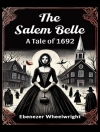In ‘The Pearl of Orr’s Island, ‘ Harriet Beecher Stowe crafts a poignant narrative that intricately weaves together themes of love, loss, and the intricate tapestry of human relationships. Set against the backdrop of a picturesque Maine island, the novel employs a vivid, descriptive literary style that captures the natural beauty and regional dialect of New England. Stowe’s exploration of social issues—particularly the moral and economic dilemmas faced by her characters—reflects her broader literary context as a prominent abolitionist and advocate for social reform during the 19th century. Harriet Beecher Stowe, an influential American author and social activist, was deeply influenced by her own experiences, including her upbringing in a staunchly abolitionist family and her passion for social justice. These formative elements shaped her narrative focus in ‘The Pearl of Orr’s Island, ‘ where the struggles of ordinary people mirror the societal challenges of her time. Stowe’s commitment to portraying authentic human experiences is evident in her character-driven story, which delves into the complexities of personal sacrifice and moral responsibility. Readers seeking a rich, emotional narrative imbued with social commentary will find ‘The Pearl of Orr’s Island’ a compelling addition to their literary collection. Stowe’s eloquent prose and profound characterizations invite reflection on the moral choices that define us, making this work a timeless exploration of the human spirit.
About the author
Harriet Beecher Stowe (1811–1896) was an American abolitionist and author, renowned for her seminal work, ‘Uncle Tom’s Cabin’, a novel that exposed the harsh realities of slavery and fomented anti-slavery sentiment before the American Civil War. Born in Litchfield, Connecticut, she was the seventh of thirteen children of the famous minister Lyman Beecher. With a staunch evangelical upbringing and keen intellect, Stowe used her literary talents to further social causes. Her novel ‘The Pearl of Orr’s Island’ (1862), though lesser-known, is another significant literary piece that underlines Stowe’s dedication to exploring social themes within a domestic narrative. The book delves deeply into the descriptive realism of life in New England, while interweaving a story of love, loss, and community. Scholarly assessment of Stowe’s work often highlights her narrative style, which combines domestic sentimentality with powerful sociopolitical critique. Stowe’s novels, having been instrumental in shaping American literature, also function as important historic documents, reflecting the complex attitudes towards race, religion, and society during the 19th century. Her writing stands out for its emotional depth, its vivid characters, and its potent representation of societal issues, a literary approach that continues to beckon scholarly interest and discussion.












